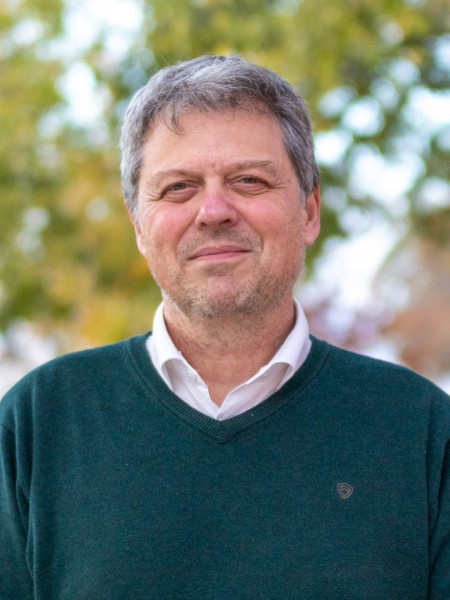abstract
Nanocomposites and low-viscous materials lack translation in additive manufacturing technologies due to deficiency in rheological requirements and heterogeneity of their preparation. This work proposes the chemical crosslinking between composing phases as a universal approach for mitigating such issues. The model system is composed of amine-functionalized bioactive glass nanoparticles (BGNP) and light-responsive methacrylated bovine serum albumin (BSAMA) which further allows post-print photocrosslinking. The interfacial interaction was conducted by 1-Ethyl-3-(3-dimethylaminopropyl)carbodiimide crosslinking agent and N-Hydrox-ysuccinimide between BGNP-grafted amines and BSAMA's carboxylic groups. Different chemical crosslinking amounts and percentages of BGNP in the nanocomposites were tested. The improved interface interactions increased the elastic and viscous modulus of all formulations. More pronounced increases were found with the highest crosslinking agent amounts (4 % w/v) and BGNP concentrations (10 % w/w). This formulation also displayed the highest Young's modulus of the double-crosslinked construct. All composite formulations could effectively immobilize the BGNP and turn an extremely low viscous material into an appropriate inks for 3d printing technologies, attesting for the systems' tunability. Thus, we describe a versatile methodology which can successfully render tunable and light-responsive nanocomposite inks with homogeneously distributed bioactive fillers. This system can further reproducibly recapitulate phases of other natures, broadening applicability.
keywords
BIOACTIVE GLASS NANOPARTICLES; OSTEOGENIC DIFFERENTIATION; HYDROGELS; QUANTIFICATION; METHACRYLOYL; PROLIFERATION; RETENTION; PLATFORM; GELATIN; IMAGE
subject category
Biochemistry & Molecular Biology
authors
Maia, JR; Castanheira, E; Rodrigues, JMM; Sobreiro-Almeida, R; Mano, JF
our authors
Projects
Human Platelet Lysates-based Scaffolds for Interfacial Multi-tissue Repair (INTERLYNK)
CICECO - Aveiro Institute of Materials (UIDB/50011/2020)
CICECO - Aveiro Institute of Materials (UIDP/50011/2020)
Associated Laboratory CICECO-Aveiro Institute of Materials (LA/P/0006/2020)
acknowledgements
This work was supported by European Union's Horizon 2020 research and innovation program under the scope of InterLynk project (grant agreement ID: 953169). This work was also developed within the scope of the project CICECO-Aveiro Institute of Materials, UIDB/50011/2020, UIDP/50011/2020 & LA/P/0006/2020, financed by national funds through the FCT/MCTES (PIDDAC).




